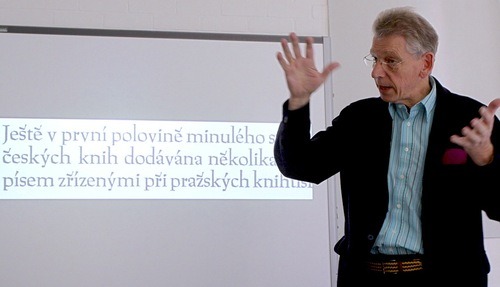
Only a couple of weeks to go!
We planned the TDi course as a complete short course on typeface design, not [just] an introduction to the subject or a tutorial on software. We started by cramming the best elements of the full-blown MATD programme, then cranked the staff-student ratio to a level closer to private tuition than class-based learning. We have a lot of flexibility to customise what we deliver to fit each participant’s interests, and structure sessions on active learning principles; this means we get you to ask the questions, and find the answers through guided research.
We focus on type, but from a wider, typographically rich perspective. We consider the documents typefaces are used to typeset, the technologies used for typesetting or rendering, the user conditions for reading, and the historical and cultural context of their development and use. For example, if we are discussing the optimal texture for reading paragraphs with a Latin typeface, we don’t just tell people ‘this or that proportion or pattern’. Instead, we start by looking at a table-full of material that spans time and genre (from some Estienne books from the 1570s, to Modern books from the late 1700s, to some 19C publicity, to a range of 20C material, to articles parsed on Instapaper on an iPad. We then guide the group’s observations until people arrive themselves at valid conclusions. We use this approach especially strongly in our sessions for non-Latin scripts, when developing an understanding of how the script works is essential. For that we discuss (and try out) tools, and examine a lot of archival material that sheds light on why some scripts have the forms they do, today.
The days of the first week are full of alternating practical sessions, and hands-on seminars, often in groups of two or three students per staff member. We make Fiona Ross, Gerard Unger, and Gerry Leonidas (the three main contributors to the MATD) available all week, all the time, and bring in a number of additional contributors for specific sessions. The practicals are both in group crits (on the wall) and one-to-one. We have a few evening lectures in the first week, usually to round off the day’s teaching, shared by Gerard Unger and Gerry Leonidas. A typical day starts with the cohort having a common session, then splitting for smaller group sessions, then reconvene. The small group sizes allow us to run the tutorials and seminars very informally, and trust people to experience material from our collections and archives intimately. From incunables, to original type drawings, and from Otl Aicher’s original posters for the Munich Olympics to a full run of Octavo and Emigre issues, participants have unprecedented access to typographic treasures. (It is difficult to describe the impact on a designer contemplating the forms of their italic of being presented with Giovannantonio Tagliente’s original writing manual. At the same time, we can answer questions about the current state of typeface design in a range of areas, with our own work and case-studies of flagship OEM projects. By the end of the first week, we aim to have helped participants develop a deep understanding of typeface design, a solid set of skills for type development, and a good research-based process for expanding your knowledge and practice in new areas.
The second week takes these foundations, and focuses on developing the practical work started in the first week, guided more by the objectives set by the student for their own project. (Often people come with a specific typeface to work on, or a script they want to build experience in, and so on.)
Most of the participants are international: the past three years saw people from 21 different countries coming to Reading. A small number coming during or after their MA courses in other institutions, or to help with type-related PhDs. Most are mature professionals, designers and typographers, or educators.
Full details in the PDF on this page.
p.s. We’ve got two places left for this year’s course. Get in touch if you’re interested.